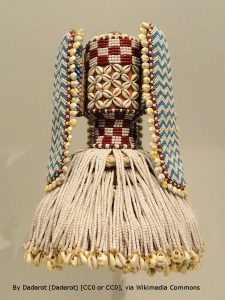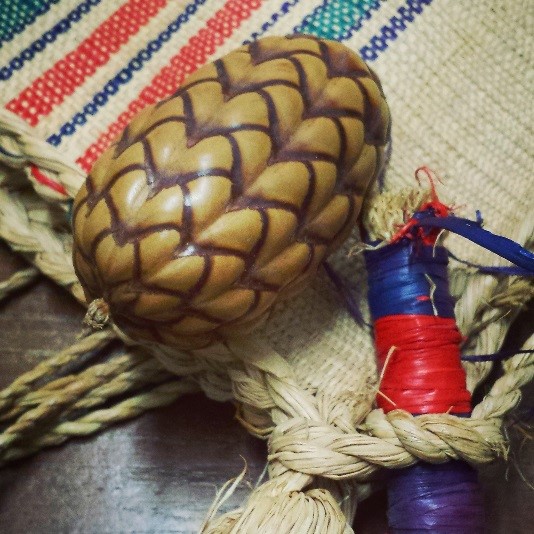By Yvette Harvey
RHS Garden Wisley, Woking, Surrey, GU23 6QB
Forget the gorgeous Madagascan bags, the baskets, the hats, the dates, the coconuts, the wine, the patterned mats and shoes, the most important product made from a palm has to be the string that holds the wrapping paper in place for your Christmas parcel. Remove from your mind visions of tropical beaches – our string is from a swamp loving plant, the Raphia.
Fine examples of raffia string adorning parcels can be found here: http://janemeansblog.com/raffia-ideas-in-gift-wrapping-craft-projects/
The string is a fibre produced from the membrane on the underside of each individual frond leaf. There are c. 20 species of Raphia, mostly concentrated in West and Central Africa. Raphia are easily distinguished from other palms by their rather messy appearance as the leaves remain on the plant after death. They also have distinctive fruits that are covered in symmetrical rows of large, shiny, overlapping scales.
The carpological collection at the RHS herbarium (WSY) contains a fruit of Raphia taedigera, the Raphia that is said to be the source of Raffia fibre. This is the new world representative and the most widely dispersed of all the Raphia palms.
Our collection was donated as a result of an enquiry by one of our members who discovered it being used as a packing material in a parcel of goods sent from Korea. The fruit is sitting on a traditional bag used by men, made, in part, from Raphia gathered in the Bamenda Highlands of Cameroon.
One of the less well known collections held by the RHS Lindley Library are the Nursery Catalogues. Along with a 1925 Nursery catalogue, we have an earlier sundries catalogue for H. Scott & Sons (London, England), and it can be seen that Raffia string is not a modern introduction to the UK. Alas, our Hipsters didn’t start the trend for Raffia string, it was clearly in use c. 100 years ago.
Not only of use as string in Bamenda bags, in Cameroon Raphia fronds are used for a number of different purposes. In the Mt Kupe area of Cameroon three taxa are known to occur:
- Raphia cf. africana: used for building (thatches and spars).
- Raphia hookeriana: leaves used for thatching and building traditional houses.
- Raphia regalis: leaves (said to be the biggest in the world) used for thatching.
Whilst in the Mefou National Park (a small area very close to Cameroon’s capital city, Yaoundé), a new species has been discovered whose leaves are not only used for thatching, but also (the rachis and petiole) for light furniture construction.
For real Raffia addicts:
See: http://shop.kew.org/catalogsearch/result/?q=Kupe
See: http://shop.kew.org/catalogsearch/result/?q=mefou
Before I sign off, if you wish to learn how to tie Raffia bows there are some YouTube videos worth watching, including: https://www.youtube.com/watch?v=W7ItXNX11WA
and for crochet lovers: https://www.youtube.com/watch?v=HBk_vfzXWWU
and for the slightly more adventurous: https://www.youtube.com/watch?v=hy0zNd6Y1pY (ed. but this might just be a bridge too far!)






Pingback: Advent Botany 2016 – Day 16: Raphia: a string for all seasons — Culham Research Group « Herbology Manchester
Pingback: Daughter of #adventbotany 2016 | Dr M Goes Wild